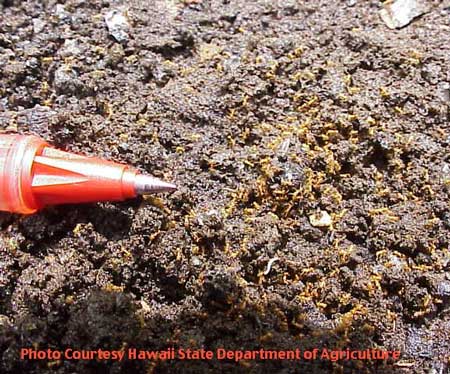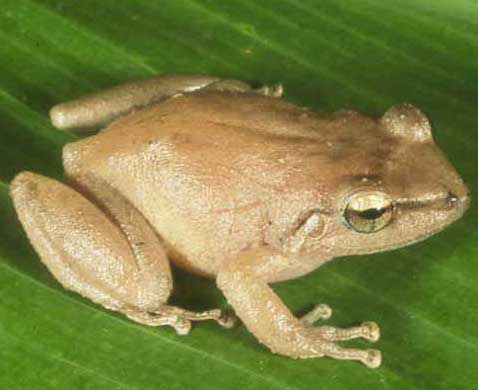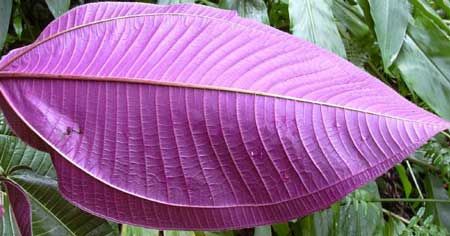Maui experts hope to catch up in battling coquis, Little Fire Ants, miconia

Maui Now: A People Of Maui Interview with Christy Martin and Teya Penniman
A number of Maui residents have been on the cutting-edge of the environmental movement in Hawaiʻi from their successful push to protect humpback whales and sea turtles to the establishment of a concerted effort to control outbreaks of invasive species, including fire ants, coqui frogs and miconia.
In fact, one group – the Maui Invasive Species Committee or MISC, was partnering with private organizations and government agencies before there was a state Invasive Species Council. MISC is under the University of Hawaiʻi system, Pacific Cooperative Studies Unit, experimenting with new technology that could control invasive species. The Maui committee’s work, with the help of labor by scores of volunteers, has paid dividends, restricting coqui frog populations mainly to the Maliko Gulch area, and finding ways of controlling outbreaks of little fire ants when new pockets are reported.
An early example is the ridding of coqui frogs at the Ritz-Carlton Kapalua, Maui resort, where workers combed the resort grounds until the coquis were eradicated. Oʻahu and Kauaʻi have also effectively fought outbreaks of coqui.
The Big Island stands in stark contrast. Many residents now wear earplugs when going to sleep to muffle the sound of coqui frogs, and farmers and homeowners have to regularly treat their properties to control little fire ants or LFA. A 2015 study recommended spending $8 million over two to three years to control LFA on the Big Island, which would have yielded $1.2 billion in reduced control cost, including $129 million in lowered economic damage. But that was 10 years ago.
Two people who have successfully helped the Maui Invasive Species Committee since its inception are Teya Penniman, acting manager, and Christy Martin, who started with MISC in 2000, but now helps with statewide issues including policy and funding.
Maui Now’s Gary Kubota interviewed Martin and Penniman.
KUBOTA: You mentioned that cuts were made to the Maui Invasive Species Program during several years? What has been its impact on Maui regarding coqui frogs and fire ants?


PENNIMAN: MISC hasn’t had adequate resources to work on controlling coqui frogs in Māliko Gulch for quite a few years. That’s why we launched our community coqui control program – empowering and supporting residents to take back their quiet nights by training them, loaning them sprayers, and providing citric acid. We now have six different community groups working to eliminate coqui from their properties. They are awesome, and we are working to grow this project.
KUBOTA: How effective is it to rely on volunteer residents and what kind of personnel do you need to halt its spread?
PENNIMAN: Help from residents isn’t just effective, it’s essential. County and state funders want to see that they aren’t the only sources of support. We can’t win this battle without their help. For our staffing, we’ve had as many as 20 crew working on coqui at once and as few as four. We could use 80.
KUBOTA: What was the total amount of the cuts and has the original funding been restored?
PENNIMAN: Our funding has always been variable – that’s the nature of “soft money” – you have to raise it every year. But MISC used to have $300,000 to $800,00 a year in funding from several different federal programs. Those funds disappeared after the economic downturn in 2009 and never really returned. They provided essential support for work on miconia, pampas grass, and coqui forgs. We are working with federal partners to re-establish funding.
KUBOTA: Is the coqui frog problem spreading? Where was it three or four years ago compared to now?
PENNIMAN: It’s varied over the years. When we had more funding, we had active control operations within Māliko Gulch itself. Our priorities in the Māliko area have shifted to stopping the spread mauka and eastward, and supporting community groups. But we also work island-wide. Coqui would have been beyond control on Maui long ago if we had not been responding to reports of frogs wherever they crop up – 30 to 40 places on the island in some years.

KUBOTA: What do you need to contain and eradicate the coqui on Maui in a reasonable time?
PENNIMAN: An operational plan done a few years ago estimated we need $6-8 million a year, decreasing over time, over a 10-year time frame to eradicate coqui from Maui. That assumes community engagement. It’s still doable. There are two other options: Control / contain the coqui forever, or decide that our future includes the sound of coqui everywhere on the island.
People care largely because of the noise. But there’s another point to consider. If we decide to stop control of coqui, they will spread into native forests which don’t have amphibians of any kind. Their numbers can reach more than 2,000 frogs per acre. As they dine on native insects and change the soil chemistry with their poop, our native ecosystems will be altered in ways we can’t predict. We’re doing this work not just for quiet nights this year, but also for future generations of birds, plants and keiki.
KUBOTA: What is being done to stop the transfer of invasive species from one island to the next?
MARTIN: This has been a really difficult problem. First, the Hawaiʻi Department of Agriculture – HDOA – is the agency responsible, but they are terribly underfunded, they are understaffed, and their pay scale just can’t attract and keep staff. On top of that, several of their key authorities and rules are unclear or ineffective.
KUBOTA: Can you give me a couple of examples?
MARTIN: Historically, state agriculture agencies focused on the risk of pests moving on the agricultural products, so their authorities were really focused on inspecting agricultural products. When HDOA’s authorities were set up, and because they have not been updated or clarified, this is still the case. Yet we know that little fire ants can nest and travel in non-agricultural commodities like hāpuʻu logs collected from infested forests, and even building materials and cars that had been stored in infested areas. HDOA needs clear authority to inspect and stop the movement of ANY item that is infested or likely infested with these pests, for the good of the community that would end up paying the perpetual price that comes with the establishment of a pest.
KUBOTA: Is there enough funding for a control program that eventually eradicates them?
MARTIN: HDOA is able to prevent and control some pests, but even in really well-funded and supported programs, things always slip through, so MISC helps fill those gaps. MISC also works to control or eradicate particularly harmful pests and weeds by working with different landowners —federal, state, county, and private, because the work shouldn’t stop at a property line.


KUBOTA: Besides personnel, what kind of technical innovations are being developed to control the spread of coqui?
PENNIMAN: State funding obtained by the state Department of Land and Natural Resources and Division of Forestry and Wildlife is supporting installation of a coqui barrier mesh fence that’s based on a design by UH-CTAHR. The barrier will prevent or slow the spread of coqui from heavily-infested areas into places under active control. Implementation of this project will be launched this year. We also have deployed a series of acoustic monitors throughout the main infestation to provide an independent assessment of progress. It’s very challenging for humans to accurately tell the difference between 15, 25, and 50 or more calling males. The company we’re working with, Conservation Metrics, is developing a way to use the data to gauge changes over time, in association with control efforts.
KUBOTA: Where will you be applying these mesh fences for coqui on Maui?
PENNIMAN: Priority sites for installation are properties where coqui aren’t being controlled on one side, for example, adjacent to a gulch, and active control taking place on the other side, like an area where a community group is working.

KUBOTA: I hear the helicopter aerial insecticide spraying seems to have been effective in controlling large colonies of fire ants in Nāhiku. What the status and what kind of funding do you need?
PENNIMAN: The Nāhiku control operation has been extraordinarily effective. The treatment area involved 175 acres that included dense hau thickets and some steep terrain. Working with the Hawaiʻi Ant Lab, which is based on the Big Island, we pioneered a new technique using a helicopter to deliver a gel bait to the trees and ground below.
Recent surveys indicate that only a few pockets of LFA remain. Like all LFA sites, we won’t claim eradication until we’ve had five years with no detections. Because of its size and terrain challenges, completing a survey is a major effort, often involving 20 to 25 staff. We’ve benefited from partner agencies helping out. The LFA program needs annual funding of $700,000. Of note, Maui has been unique in our ability to take on this challenge – that is largely thanks to exceptional support from the County of Maui and working cooperatively with Hawaiʻi Department of Agriculture.
We’ve shown that eradication is possible, but we still have sites where we think we have control and then another pocket pops up. It would be tremendously helpful to have an LFA detector dog – a project we have long tried to bring to fruition. We are hopeful we can make that a reality this year.
KUBOTA: How much would it cost for the LFA dog detector and what would the dog be able to do? Have dogs been used for these purposes before?
PENNIMAN: The use of dogs to detect invasive species is growing as a tool in Hawaiʻi, which is great to see. We have been working with some of the world’s experts on use of ant-sniffing detector dogs to develop the project. They would be especially valuable for surveying nurseries, helping determine the extent of a new site, and letting us know if we’ve really eradicated the ants when we think we’re done. Initial costs are estimated at about $160,000. Ongoing costs would include a handler, animal care, and ongoing training to ensure accuracy.
KUBOTA: What other MISC programs need funding?
PENNIMAN: We need increased funding for ground and aerial operations for miconia and pampas grass. We also need to increase outreach and education in the schools that explain our different native ecosystems and the effect of invasive species on these systems. Keiki are good at finding new things, they help bring awareness into the home, and they are our future. Our funding also covers work by the Molokaʻi Invasive Species Committee. They need more staff for invasive plant work and a baseyard.
KUBOTA: I understand Maui Invasive Species Committee recently moved its office and baseyard to the Old Maui High School.

PENNIMAN: Yes, We hope to move this to a long-term lease so we can address key infrastructure challenges, including water and a better electrical system. We would love to help realize the long-term goal of the Friends of Old Maui High to make the campus into the Patsy T. Mink Environmental Education Center, and look forward to engaging with the community about this concept. We are especially enjoying our relationship with the Friends and the occasional opportunity to interact with Old Maui High alumni.
KUBOTA: What could be the consequences if Maui fails to control fire ants?
PENNIMAN: We only have to look at Hawaiʻi Island to see what will happen if we fail to control little fire ants on Maui. They were already somewhat widespread there when we first discovered LFA on Maui. People have to treat their property with chemicals – forever; there are portions of their property they don’t use; they are regularly stung; they have animals they are concerned about going blind. LFA is changing the natural environment on Hawaiʻi Island, but it will be profound as the ants dominate and replace the invertebrate fauna. We still have a chance on Maui to eradicate them. It will likely be what we call “serial eradications” because they will keep arriving and we know there have to be more infestations on Maui that we just aren’t aware of. But we have demonstrated that eradication is possible.










